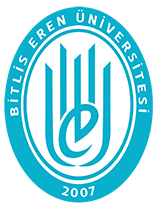Biosorption of Oxytetracycline from Aqueous Solutions by Pine Tree Waste Cones (Pinus nigra Arn.)
Abstract
Removal of Oxytetracycline (OTC), which is in the antibiotic group with toxicological effects for aquatic ecosystems, is very important due to its negative effects on flora and fauna. Adsorption process, which is one of the most effective methods for removing pharmaceutical pollutants, is an economical and environmentally friendly method. For this reason, in this study, biosorbent obtained from pine tree (Pinus nigra Arn.) waste cone powder (Pn-wcp), which is a low-cost and easily available waste material, was used. The results obtained from the batch adsorption experiments were tested with 4 different kinetic and isotherm models and various error functions were used to determine the most appropriate model. In order to optimize the variables in the adsorption system, contact time and initial OTC concentration factors were investigated. In addition, fourier transform infrared spectroscopy (FTIR), scanning electron microscope (SEM) and energy dispersive X-ray (EDX) images of raw and OTC-loaded Pn-wcp were examined. In this study, the most appropriate kinetic model was determined as Pseudo second order (PSO) with 0.999 R2 value and Freundlich isotherm model with 0.998 R2 value. In addition, the maximum adsorption capacity (qmax) was calculated as 67.51 mgOTC/gPn-wcp. The results show that Pn-wcp is a sustainable environmentally friendly biosorbent for OTC removal.
Collections

DSpace@BEU by Bitlis Eren University Institutional Repository is licensed under a Creative Commons Attribution-NonCommercial-NoDerivs 4.0 Unported License..













